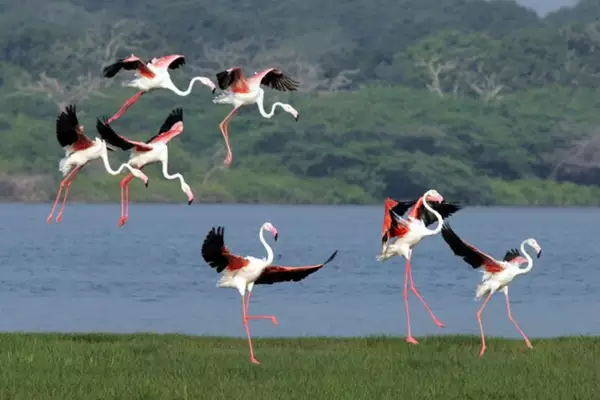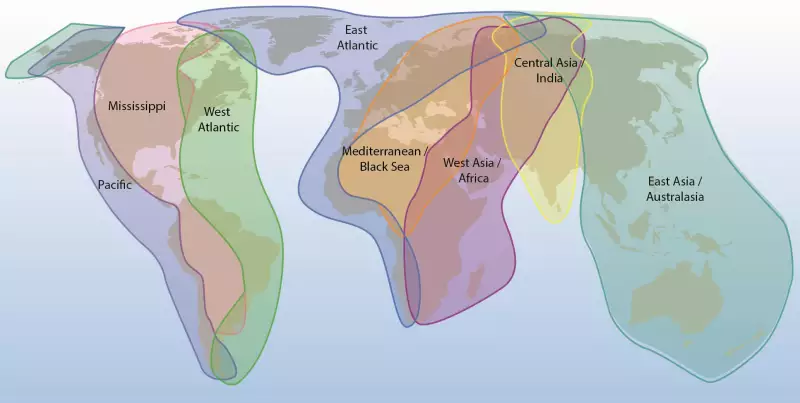The Central Asian Flyway was recently adopted at the fourteenth Meeting of the Conference of the Parties to the Convention on the Conservation of Migratory Species of Wild Animals (CMS COP 14).
About Central Asian Flyway:
- The Central Asian Flyway (CAF) is a migration route for waterbirds that covers 30 countries in Eurasia, between the Arctic and Indian Oceans.
- It’s the shortest flyway in the world and is entirely within the Northern Hemisphere.
Key features of the Central Asian Flyway:
Geographical Extent:
- The Central Asian Flyway covers a large expanse of land, extending from the Arctic tundra in the north to the Indian subcontinent in the south.
- It includes countries such as Russia, Mongolia, Kazakhstan, Turkmenistan, Uzbekistan, Tajikistan, Kyrgyzstan, Afghanistan, and parts of northern Iran, Pakistan, and northwest India.
Migration Routes:
- Birds using the Central Asian Flyway typically breed in the northern regions and migrate southwards to warmer areas for the winter.
- The migration routes may vary among species, and some birds travel thousands of kilometers during their journeys.
Critical Stopover Sites:
- Along the flyway, there are crucial stopover sites where migratory birds rest and refuel.
- These sites are essential for their survival, as they provide food resources and suitable habitats.
- Wetlands, lakes, and other water bodies along the route are particularly important for waterbirds.
Conservation Importance:
- The Central Asian Flyway is of great importance for the conservation of migratory bird species.
- Many of the species that use this flyway are facing threats such as habitat loss, climate change, and human activities.
- Conservation efforts often focus on protecting key stopover sites and ensuring the sustainable management of habitats along the flyway.
International Cooperation:
- Given that migratory birds traverse multiple countries, the conservation of the Central Asian Flyway requires international collaboration.
- Various organizations, including governmental and non-governmental bodies, work together to address the challenges faced by migratory birds and their habitats.
About the Initiative for the Central Asian Flyway:
- The primary objective of the initiative is to restore and maintain the favorable conservation status of migratory species populations within the Central Asian Flyway.
- Emphasis is placed on preserving ecological connectivity in the flyway to ensure the well-being of the diverse bird species.
- The initiative received support from BirdLife International and 30 governments, fostering a collaborative effort to protect migratory species across the expansive flyway.
Challenges Faced by Migratory Birds:
- Over 240 species of migratory birds in the Central Asian Flyway are experiencing population declines, with 48 species classified as Globally Threatened or Near Threatened.
- The initiative recognizes and addresses key threats, including severe habitat loss, overexploitation, illegal killing, and risks associated with the rapid development of energy infrastructure.
Ref: Source
| UPSC IAS Preparation Resources | |
| Current Affairs Analysis | Topperspedia |
| GS Shots | Simply Explained |
| Daily Flash Cards | Daily Quiz |



